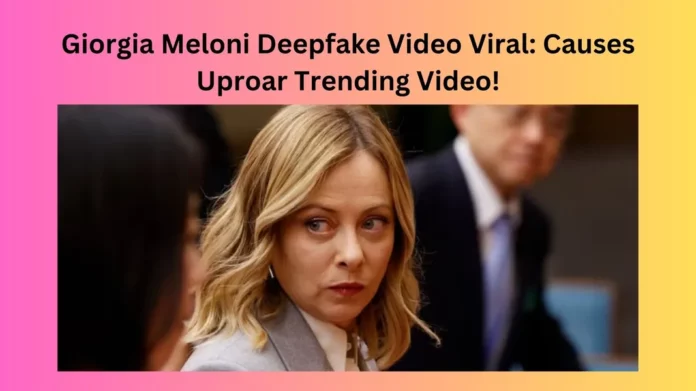In the age of rapidly advancing technology, the emergence of deepfake videos has sparked significant controversy and concern. Recently, a deepfake video purportedly featuring Giorgia Meloni, a prominent political figure, went viral, raising questions about the authenticity of digital content and its potential impact on society. Let’s delve into the phenomenon of deepfake videos, the specifics of this incident involving Giorgia Meloni, and the broader implications it carries.
Understanding Deepfake Technology
Deepfake technology utilizes artificial intelligence algorithms to create highly realistic fake videos by superimposing images or videos onto others, often seamlessly blending them with existing footage. These videos can depict individuals saying or doing things they never actually did, leading to misinformation and manipulation.
The Viral Giorgia Meloni Video
The Giorgia Meloni deepfake video that circulated online purportedly showed the politician making inflammatory remarks, stirring controversy and confusion. Despite efforts to debunk it, the video gained traction on social media platforms, reaching a wide audience before its true nature was exposed.
Implications for Political Discourse
The spread of deepfake videos like the one involving Giorgia Meloni raises serious concerns about the integrity of political discourse. In an era where public opinion can be swayed by viral content, the dissemination of false information can have far-reaching consequences, undermining trust in institutions and eroding democratic processes.
Challenges for Media Literacy
The proliferation of deepfake videos underscores the importance of media literacy and critical thinking skills. With technology becoming increasingly adept at creating convincing falsehoods, it’s essential for individuals to scrutinize the content they consume and verify its authenticity before sharing it further.
Legal and Ethical Considerations
The rise of deepfake technology poses complex legal and ethical challenges. Determining accountability and establishing frameworks to regulate the creation and dissemination of deepfake content are pressing issues that policymakers and legal experts must address to safeguard against potential harm.
Combating Deepfake Disinformation
Efforts to combat deepfake disinformation require a multifaceted approach, involving collaboration between technology companies, policymakers, and civil society. Implementing robust detection algorithms, raising awareness about the prevalence of deepfakes, and promoting media literacy initiatives are crucial steps in mitigating their impact.
Conclusion
The viral Giorgia Meloni deepfake video serves as a stark reminder of the growing threat posed by digital manipulation and disinformation. As technology continues to advance, it’s imperative that we remain vigilant and proactive in safeguarding against the harmful effects of deepfake content on our society and democracy.
FAQs:
1. How can I spot a deepfake video?
- Deepfake videos often exhibit subtle anomalies such as unnatural facial movements or inconsistent audio syncing. Additionally, verifying the original source of the video and cross-referencing it with reputable sources can help identify potential fakes.
2. Are there any laws against creating or sharing deepfake content?
- Legal frameworks surrounding deepfake content vary by jurisdiction. While some countries have enacted legislation to address the issue, enforcement remains a challenge due to the decentralized nature of online platforms.
3. Can deepfake technology be used for positive purposes?
- While deepfake technology has garnered notoriety for its potential to spread misinformation, it also has applications in fields such as entertainment and digital art. However, ethical considerations must be carefully weighed to prevent misuse.
4. How can I protect myself from falling victim to deepfake disinformation?
- Practicing media literacy, verifying sources, and remaining skeptical of sensationalistic content are essential strategies for mitigating the risk of encountering deepfake disinformation online.
5. What role do social media platforms play in combating deepfake content?
- Social media platforms bear a responsibility to implement robust content moderation policies and detection mechanisms to prevent the spread of deepfake content on their platforms. However, the effectiveness of these measures remains a subject of debate and scrutiny.















